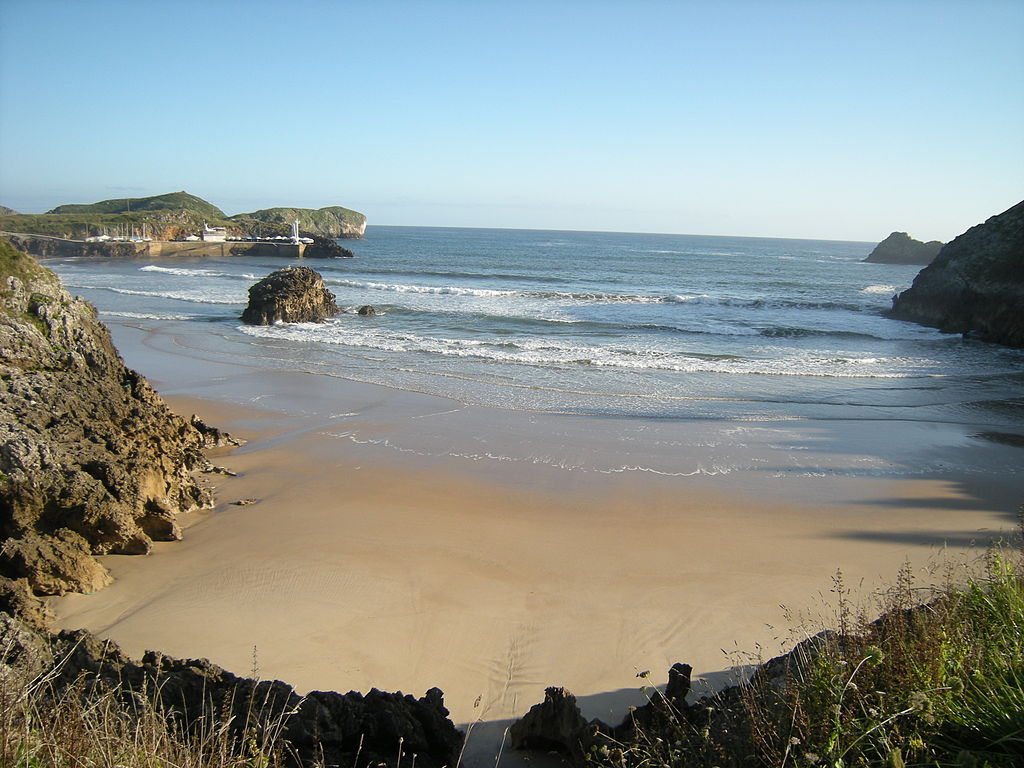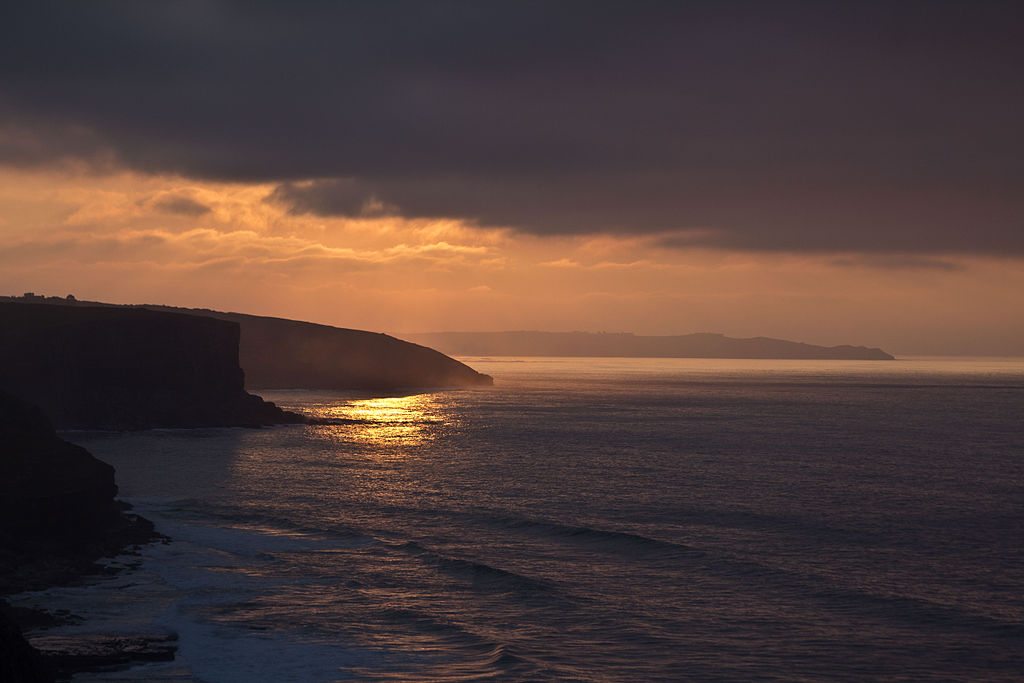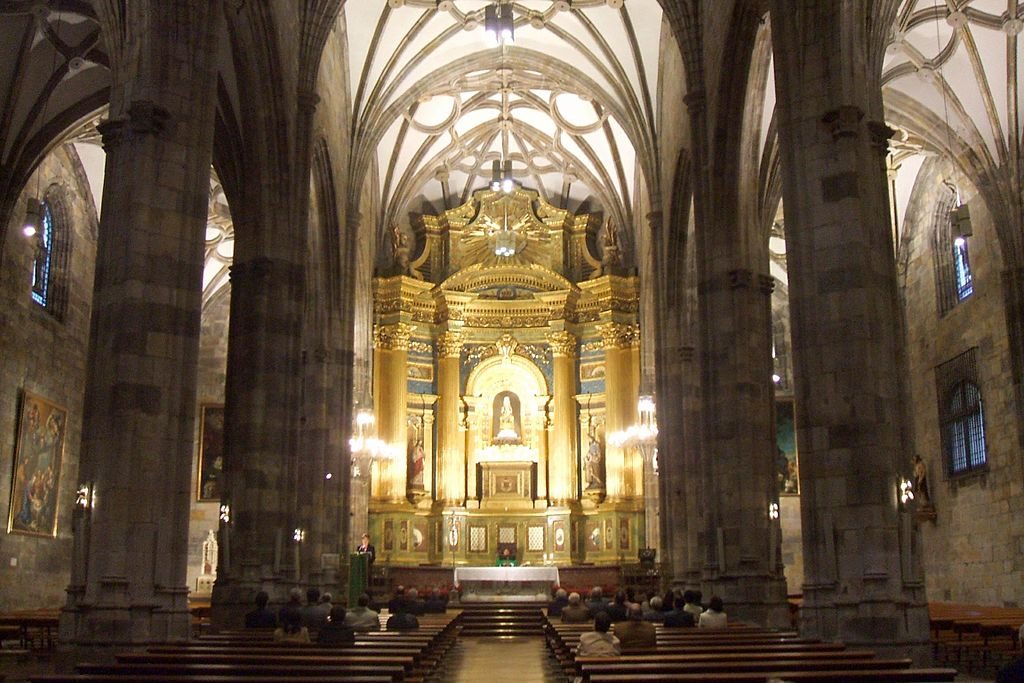Despite being slightly less known, Camino del Norte, also known as Camino de la Costa, the Northern Route, and the Coastal Camino, is said to be the oldest pilgrimage route to Santiago de Compostela.
When the remains of Saint James were first discovered, Muslim occupation had spread to many northern territories, making it the safest passage for pilgrims. However, as the Spanish began regaining their land, this route was slowly abandoned in favor of the less challenging options such as Camino Frances.
Today, the Camino del Norte is the third most popular way to Santiago, according to information gathered by the pilgrim’s office in Santiago. It is a great alternative for first-time pilgrims who strive to get away from the crowd while benefiting from the well-developed service infrastructure.
Overview of Camino del Norte Route
Camino del Norte passes through four autonomous regions: Basque Country, Cantabria, Asturias, and Galicia. Starting in the small border town of Irún, the route winds along the coast until reaching Galicia, where it turns inland and joins Camino Frances for the last stage in Arzúa. The distance from Irún to Santiago is 825 km and can be conquered comfortably in 32 stages.
Although it is called the coastal route, it does not always stick to the shore. There are a lot of stages where the sea is nowhere to be seen. Some pilgrims prefer to deviate from the coastal route midway and turn inland in Villaviciosa, joining the Camino Primitivo in the capital of Asturias, Oviedo.
Terrain
Since the route winds parallel the northern coast, the terrain is wrinkled with rivers entering the sea, giving the pilgrims a full dose of descents and ascents. The added weight of your backpack makes Camino del Norte particularly hard on the knees. Nonetheless, the impressive panoramas are worth it.
The Basque Country stands out for its mountainous terrain that takes you through green, humid valleys and extensive forests. Count on numerous climbs and drops ranging from 300-500 m. As you enter Cantabria, the way is mostly composed of asphalt roads and often leads along the highways. A few sections offer asphalt-free alternatives. However, the price is often a few added kilometers. The highlights of this region are several lovely beaches and valleys such as Liendo and Güemes. The terrain in Asturias turns mountainous and rural again but not as physically demanding as in the Basque Country. Although asphalt roads are still on the table, they are significantly more natural paths and dirt roads than in Cantabria. Right after arriving in Galicia, the route abandons the coast descending southwest through green, scarcely inhabited Galician hills and pastures.
Waymarking
The Camino is waymarked with the traditional yellow arrow, which is in some coastal parts accompanied by the red and white bars of a long-distance GR footpath.
The waymarking in the Basque Country is excellent and easy to follow, while in Cantabria, it can be a bit unclear, so check the route well the day before. In Asturias, the marking is correct for the most part but can be confusing in some sections, for example, Monte Areo (10 km past Gijón) and also between Luarca and Villapedre. Galicia, being the final stage, is waymarked expertly.
Cities & Distances
The Camino de Santiago Northern Route from Irún to Arzúa passes through 133 villages, towns, and cities over the 784 km route. On average, you should find at least basic services every 5.9 km. However, there are a few longer sections without any bars or stores: from Gernika to Goikolexea (16 km) in the Basque Country, from Vilela to San Xusto (16,8 km) in the first Galician stage, and Mondoñedo a Gontán (17 km) in the second Galician stage. When crossing these parts, make sure you have enough water and food.
The Northern Way passes through several big cities, namely Bilbao, with 350 thousand inhabitants (900 thousand including the suburbs); Gijón, with 280 thousand inhabitants; San Sebastián, with 185 thousand inhabitants; Santander, with 180 thousand inhabitants; and, lastly, Avilés, with 85 thousand inhabitants.
When To Go
Forget about the unbearable heat of the south of Spain. The weather along the northern coast is much more humid and can be changeable sometimes – think rain showers. However, the vivid greenery makes up for higher rain chances.
Weather-wise, the best time to undertake your journey is in the summer months, between June and September. Although weather forecasts are particularly optimistic, May or October can also be great for walking. Walking the Camino in winter, especially the Camino del Norte, is generally not recommended as the temperatures can get notably low and frequent (often heavy), and rainfall is unavoidable.
August is the busiest month, so if you hope for a more solitary experience, plan your trip towards the start or end of the season.
Accommodation
Accommodation options for pilgrims are not as abundant as on the Camino Frances, but they are sufficient. Generally, you should not have problems finding suitable and cheap accommodation. However, be wary if you are traveling in August as the number of pilgrims is at its highest and places are limited or in winter when many albergues close for periods.
You can come across four types of pilgrim accommodation on the way:
- Hospital de Peregrinos: Also known as ‘Donativo’, is an accommodation exclusive to pilgrims, serviced by a volunteer (often an ex-pilgrim) and the price is a voluntary donation.
- Albergue de Peregrinos: Also only for pilgrims, it can be owned privately or by a local municipality with a fixed price.
- Refugio de Peregrinos: Usually, the place is designated to provide shelter to pilgrims in case of emergency so that the services can be very basic or none. Many refugios are only temporary establishments. It can be free or for a small fee.
- Albergue de Juventud: This is a typical youth hostel sheltered by Hostelling International; it has nothing to do with the Camino de Santiago, although it is a good alternative in case of the absence of a pilgrims’ hostel in town. A Youth Hostelling Card is often required, the Pilgrim’s Credential is only accepted in some.
TIP: In Güemes, in the stage just before Santander, 1 km off the official route, hides one of the most charming and curious albergues: La cabaña del abuelo Peuto (The Cabin of Granpa Peuto). The owner is a parish priest, and great traveler Father Ernesto and his kindness and wisdom are a source of inspiration for all the travelers who stay there.
What to See Along the Camino del Norte
Camino del Norte is a route full of breathtaking mountainous as well as coastal panoramas. The journey is not short on cultural and historical jewels either. Historic town centers and examples of impressive ecclesiastical monuments frame the way across all regions.
For example, in Basque Country, you can visit the Palace of Narros and Torre Luzea, in Zarautz, the summer residence of Queen Elizabeth II or the famous Basilica de Begoña in Bilbao built in the Gothic style of the sixteenth century. Asturias offers the Romantic Monasterio de Santa María la Real de Obona in Tineo or the historical Catedral de Oviedo if you are up for a small detour. As far as Galicia is concerned, it is worth noting Lourenzá, with the imposing monastery of San Salvador, Mondoñedo with its cathedral of Santa María and, above all, the extraordinary Monastery of Sobrado dos Monxes.
Best Guide Books
Currently, the best and most accurate guidebook on the market is The Northern Caminos (The Caminos Norte, Primitivo, and Inglés) written by Dave Whitson, Laura Perazzoli and published by Cicerone Press. The guide includes maps, detailed stage-by-stage description of the route and services, tips on what to see as well as useful Spanish words and phrases.
Make sure you get the latest edition published during 2019. You can find it on Amazon. If you happen to have the older version you can check out the authors’ website for the most recent updates and changes to the information in the book.
Travel Along The Route
The quickest way to find bus or train connections is goeuro.com. The site is in English and provides a list of bus, train, and flight connections from multiple companies not just in Spain. It is a good place to look up long as well as short distance transits. You can buy the tickets directly on the site.
Alternatively, you can check FEVE by Renfe, the official train connections along Camino del Norte. The advantage is you can check the detailed map of the train route as well.
Why Camino del Norte?
Compared to the other routes, Camino del Norte is more physically demanding due to frequent climbs and drops due to the mountainous terrain. People who have problems with their knees or are not in very good shape should opt for a less challenging alternative. Nonetheless, the scenery makes up for the sweat and effort. It is the perfect route for those who want to escape the mass popularity Camino Frances suffered in the past few years and submerge themselves in a more solitary and perhaps spiritual experience.

I love hiking, backpacking, and camping. From the Camino de Santiago to the West Highland Way in Scotland or simply a great day hike on the weekend. Hiking refreshes me, my mind, and keeps my body reasonably fit. So far I have walked three Camino routes and many other long distance hikes in the UK, Canada, and around the rest of Europe. One of the best was my hike up Ben Nevis.



